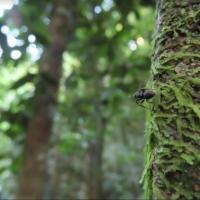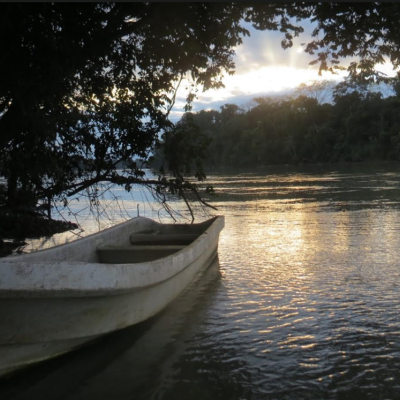CBS grad student explores the economic impacts of jaguars in Mexico
Since the start of my graduate journey at ASU I have been interested in looking at the value and costs that jaguars bring to the people living near them. For example, jaguars can kill people’s domestic animals, but can also control the populations of other animals that may cause economic problems by eating maize or other agricultural products. I wanted to look at these values and costs in a setting where people practiced a variety of different economic activities that could be affected in different ways.
In spring of 2022, I managed to complete two rounds of field work in communities that border the biosphere reserve of Montes Azules in Chiapas, Mexico. Through this work, I aimed to answer one of my research questions: how would local people value different states of the world resulting from changes to jaguar populations?
In my first round of field work I held six focus groups in three communities there to understand the types of economic damages that wild animals cause for local people. In the process, I learned that having local contacts was indispensable for getting things done in the area. I also learned to quickly accept roadblocks to any plans and focus on finding alternative solutions to any given problem in my work. The discussions in focus groups allowed me to design surveys for the second part of my field work.
That same semester I returned to different communities to carry out surveys aimed at understanding peoples’ preferences towards outcomes that could result from gaining or losing jaguars. Fortunately, many people in the area seemed interested in the topic of the survey, and so I managed to complete nearly 300 surveys with the help of assistants. I am currently in the process of analyzing all the data collected, along with information from the focus groups.
While in the area I had the chance to see some of the captivating local wildlife, from ants I could not identify (left) to spider monkeys --Ateles geoffroyi (center) to birds--Momotus momota (right). Photo credit: Alejandro Bellon
My research would not have been possible without on the ground support from the conservation organization Natura Mexicana that is central to conservation efforts in the region, as well as funding from ASU and the Rufford Foundation. I got to see that just maintaining conservation successes requires constant effort and interactions with local communities. Seeing this really helped me appreciate the work on the ground that people in the area have been doing and the fragility of conservation if this work were interrupted. I suspect this is also true in other places and is important to keep in mind.
This awareness fostered a sense of responsibility as a representative of “conservation” while I was working in their communities. I also got to spend a time in the communities where I worked and at times got to hear how they hoped outsiders like me could help better their lives. Depending on where people do field work, it is important to know you may have to juggle multiple roles besides just being a researcher.




